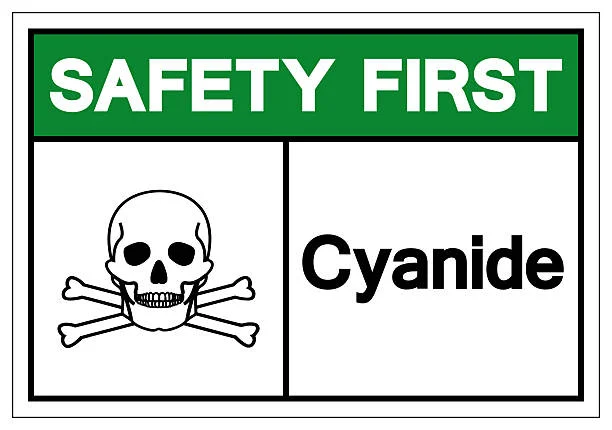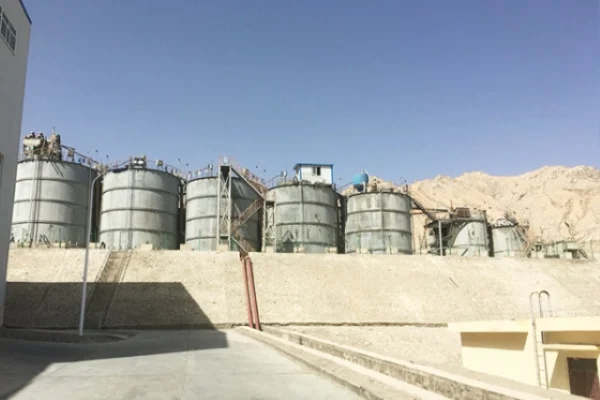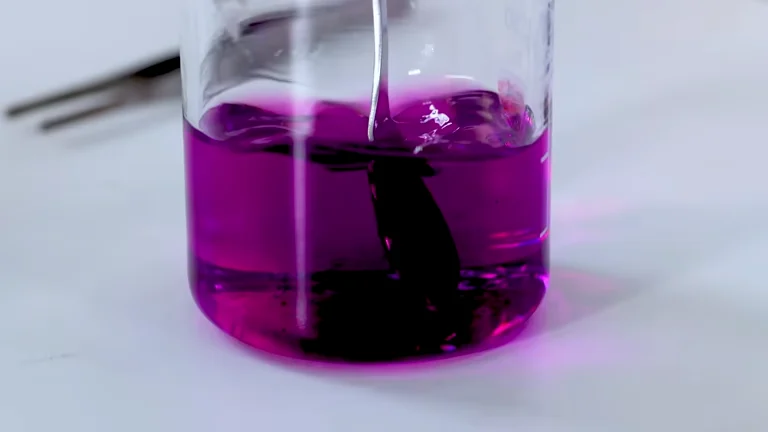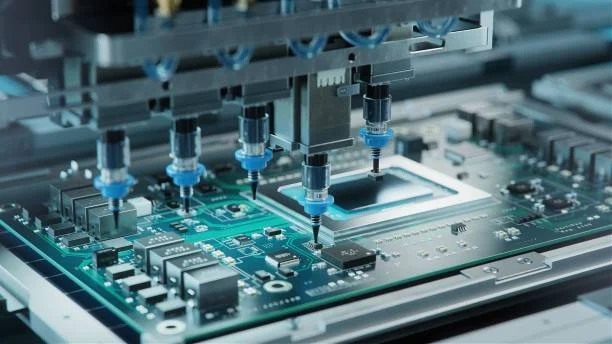
In the precision manufacturing field of the Electronics Industry, Sodium Cyanide (NaCN), a highly toxic substance, is playing an indispensable role due to its unique chemical properties. As a strong complexing agent and reducing agent, sodium cyanide plays a crucial role in the production of electronic components, semiconductor processing, battery manufacturing, and other aspects. However, its high toxicity and environmental risks also pose severe challenges to the industry. This article will delve into the application scenarios of Sodium cyanide in the electronics industry and analyze the technical and environmental protection issues it faces.
I. Core Applications of Sodium Cyanide in the Electronics Industry

1.Metal Surface Treatment and Electroplating
Sodium cyanide is an important component in traditional Electroplating processes, especially in the manufacturing of printed circuit boards (PCBs) and connectors, where it is used for the surface treatment of metals such as copper, gold, and silver. Through the complexing action of sodium cyanide, the uniform deposition of metal ions can be achieved, ensuring the compactness and electrical conductivity of the coating. For example, in the micro-hole metallization process of high-end PCBs, sodium cyanide can effectively control the deposition rate of copper, avoiding short-circuit or open-circuit defects.
2.Semiconductor Device Manufacturing
In semiconductor chip production, sodium cyanide is used for the cleaning and etching of the wafer surface. For instance, after silicon wafer polishing, the sodium cyanide solution can remove residual metal impurities and prevent circuit short-circuits. In addition, its strong reducing property can be used for the surface treatment of certain compound semiconductors (such as GaAs), improving device performance.
3.Battery and Energy Storage Technology
In the synthesis of positive electrode materials for lithium-ion batteries and nickel-metal hydride batteries, sodium cyanide can be used as a complexing agent to help regulate the morphology and particle size of metal precursors, thereby enhancing the battery's capacity and cycle life. For example, in the preparation process of ternary positive electrode materials (such as NCM), the coprecipitation reaction involving sodium cyanide can optimize the particle distribution.
4.Recycling of Electronic Waste
In the treatment of electronic waste, sodium cyanide can be used to efficiently leach precious metals such as gold and silver from 废旧 circuit boards. Its complexing ability enables precious metals to dissolve in the form of cyanide complexes, facilitating subsequent purification.
II. Technical and Environmental Challenges Faced by Sodium Cyanide
1.High Toxicity Risk and Safety Control
Sodium cyanide is extremely acutely toxic (the median lethal dose LD50 is only 6.4 mg/kg), and contact with its dust or solution through the skin, inhalation, or accidental ingestion can be fatal. Electronics factories need to be equipped with strict protective equipment, wastewater treatment systems, and emergency response mechanisms, resulting in a significant increase in operating costs. In addition, many regions around the world (such as the European Union and China) implement a license system for the use of cyanides, further restricting its application scope.
2.Environmental Pollution and Ecological Hazards
If cyanide-containing wastewater is directly discharged without thorough treatment, hydrogen cyanide (HCN) will be generated through decomposition in natural water bodies, posing a threat to aquatic organisms and human health. Traditional treatment methods (such as the alkaline chlorination method) require a large amount of oxidants and may produce secondary pollution (such as chlorine-containing by-products). Therefore, electronics enterprises need to invest a high cost in building advanced wastewater treatment facilities.
3.Technical Bottlenecks of Substitutes
Although cyanide-free electroplating technologies (such as using complexing agents like EDTA and citrates) have made progress, they still cannot fully replace sodium cyanide in terms of coating quality (such as uniformity and adhesion) and process stability. For example, the application of cyanide-free gold plating technology in electronic connectors still has the problem of relatively high contact resistance, which limits its promotion.
4.Regulatory and Social Pressures
With the increasing global awareness of environmental protection, the supervision of Cyanides by countries around the world is becoming more and more stringent. For example, the EU's REACH regulation lists sodium cyanide as a substance of very high concern (SVHC), requiring enterprises to provide alternative solutions. Consumers' demand for "green electronic products" also forces manufacturers to switch to safer production processes.
III. Industry Response Strategies and Future Trends
1.Technological Innovation: Developing Green Alternative Processes
Cyanide-Free Electroplating Technology: Researchers are exploring the use of bio-based complexing agents (such as chitosan) or ionic liquids to replace cyanides, reducing toxicity.
Dry Processes: Adopting dry technologies such as physical vapor deposition (PVD) or chemical vapor deposition (CVD) to reduce the dependence on liquid chemical reagents.
Intelligent Production: Optimizing electroplating parameters through AI algorithms to reduce the use of sodium cyanide while improving product yield.
2.Circular Economy and Resource Recycling
Electronics enterprises are gradually introducing a closed-loop management model. Technologies such as membrane separation and ion exchange are used to recycle cyanides and metal ions in wastewater, achieving resource reuse. For example, a leading PCB manufacturer has achieved a sodium cyanide recycling rate of over 90%, significantly reducing consumption and pollution.
3.Policy and Industrial Collaboration
The government can encourage enterprises to adopt green processes through tax incentives, R&D subsidies, and other policies, and at the same time promote the formulation of industry standards (such as the "Administrative Measures for the Control of Pollution Caused by Electronic Information Products"). In addition, enterprises in the upstream and downstream of the industrial chain (such as material suppliers and equipment manufacturers) need to strengthen cooperation to jointly develop low-toxic alternative solutions.
Conclusion
The application of sodium cyanide in the electronics industry reflects the contradiction between chemical substances promoting technological progress and environmental protection. Although it is difficult to be completely replaced in the short term, with the development of green chemistry and intelligent manufacturing, the electronics industry is accelerating its transformation towards a safer and more sustainable direction. In the future, technological innovation, policy guidance, and industrial collaboration will be the keys to solving this problem, helping the electronics industry achieve the win-win goal of "high efficiency" and "greenness".
- Random Content
- Hot content
- Hot review content
- Magneto Electric Detonator(Anti stray current)
- Toluene
- Cyanoacetic acid 99% Powder
- Phosphoric Acid 85% (Food grade)
- Sodium Metasilicate Pentahydrate
- Pharmaceutical Grade Zinc Acetate
- Lithium chloride, 99.0%,99.5%
- 1Discounted Sodium Cyanide (CAS: 143-33-9) for Mining - High Quality & Competitive Pricing
- 2China's New Regulations on Sodium Cyanide Exports and Guidance for International Buyers
- 3Sodium Cyanide 98% CAS 143-33-9 gold dressing agent Essential for Mining and Chemical Industries
- 4International Cyanide(Sodium cyanide) Management Code - Gold Mine Acceptance Standards
- 5China factory Sulfuric Acid 98%
- 6Anhydrous Oxalic acid 99.6% Industrial Grade
- 7Oxalic acid for mining 99.6%
- 1Sodium Cyanide 98% CAS 143-33-9 gold dressing agent Essential for Mining and Chemical Industries
- 2High Quality 99% Purity of Cyanuric chloride ISO 9001:2005 REACH Verified Producer
- 3Zinc chloride ZnCl2 for High Molecular Weight Polymers Initiator
- 4High Purity · Stable Performance · Higher Recovery — sodium cyanide for modern gold leaching
- 5High Quality Sodium Ferrocyanide / Sodium Hexacyanoferr
- 6Gold Ore Dressing Agent Safe Gold Extracting Agent Replace Sodium Cyanide
- 7Sodium Cyanide 98%+ CAS 143-33-9











Online message consultation
Add comment: